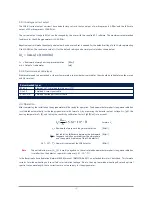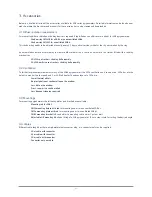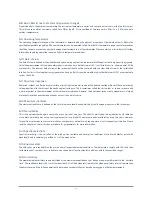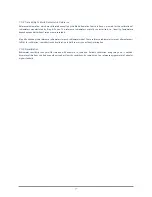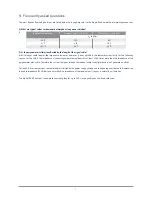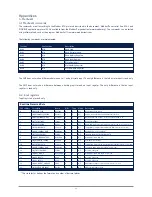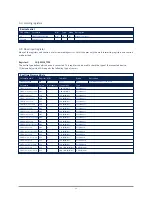
6.8 Zero o
ff
set B due to ambient temperature changes
Proportionally to the ambient temperature the instrument temperature varies and causes heat currents inside the instrument.
This will cause an offset commonly called Zero Offset type B. It is quantified as the response in W/m² to a 5 K/hr change in
ambient temperature.
6.9 Operating temperature
The operating temperature range of the radiometer is determined by the physical properties of the individual parts. Within the
specified temperature range Kipp & Zonen radiometers can be operated safely. Outside this temperature range special precautions
should be taken to prevent any physical damage or performance loss of the radiometer. Please contact your distributor for further
information regarding operation in unusually harsh temperature conditions.
6.10 Field of view
The field of view is defined as the unobstructed open viewing angle of the radiometer. WMO requires that a high quality pyrgeome-
ter for the measurement of long-wave atmospheric radiation has a field ofview of 180° in all directions (i.e. a hemisphere). SGR4
achieves this. The inherent field of view of the instrument should not be confused with the clear field of view of the installation
location. For less critical applications pyrgeometers having a flat silicon window with a typical field of view of 150° are acceptable,
such as the SGR3.
6.11 Directional response
Radiation incident on a flat horizontal surface originating from a point source with a defined zenithposition will have an intensity
value proportional to the cosine of the zenith angle of incidence. This is sometimes called the ‘cosine-law’ or ‘cosine-response’ and
is very important in the measurement of short-wave solar radiation. However, the directional response of pyrgeometers is largely
irrelevant since the hemisphere above does not act like a point source.
6.12 Maximum irradiance
The maximum irradiance is defined as the total irradiance level beyond which physical damage mayoccur to the instrument.
6.13 Non-stability
This is the percentage change in sensitivity over a period of one year. This effect is mostly due to degradation by UV radiation
of the black absorber paint on the sensing element surface. Kipp & Zonen recommends recalibration every two years. However,
for quality assurance purposes some institutes, companies or networks may require more or less frequent recalibration. Please
read the chapter on the calibration procedure for pyrgeometers for more information.
6.14 Spectral selectivity
Spectral selectivity is the variation of the window transmittance and absorption coefficient of the black detector paint with
wavelength and is commonly specified as % of the mean value.
6.15 Environmental
The SGR series are intended for outdoor use under all expected weather conditions. The radiometers comply with IP 67 and their
solid mechanical construction is suitable to be used under all environmental conditions within the specified ranges.
6.16 Uncertainty
The measurement uncertainty can be described as the maximum expected hourly or daily uncertainty with respect to the ‘absolute
truth’. The confidence level is 95%, which means that 95% of the datapoints lie within the given uncertainty interval representing
the absolute value. Kipp & Zonen empirically determine uncertainty figures based on many years of field measurements.
31


